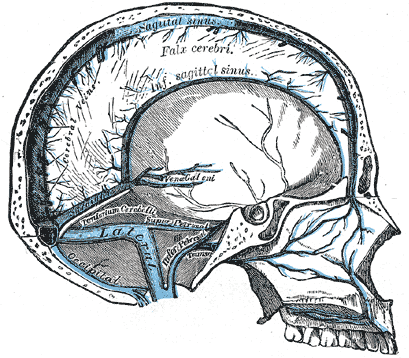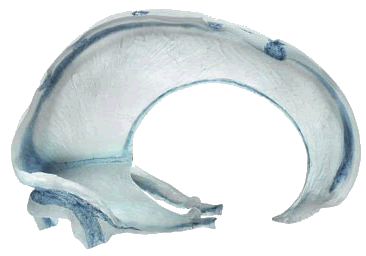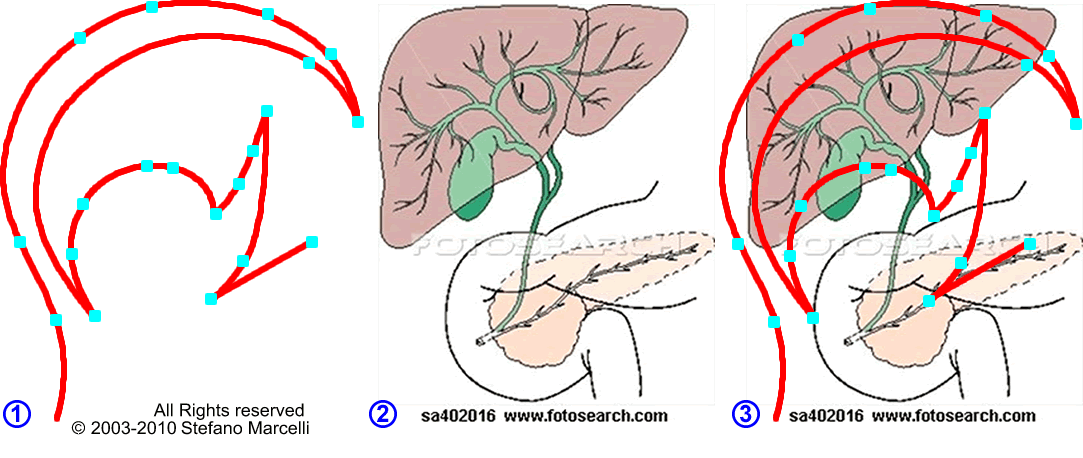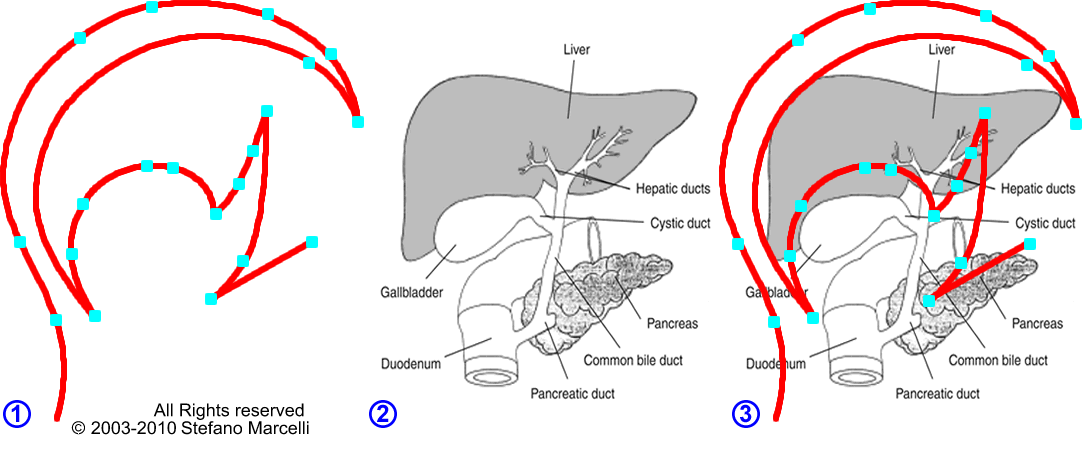|
Does the gallbladder acupuncture meridian establish the shapes of the skull and liver? home/table of contents - previous - next 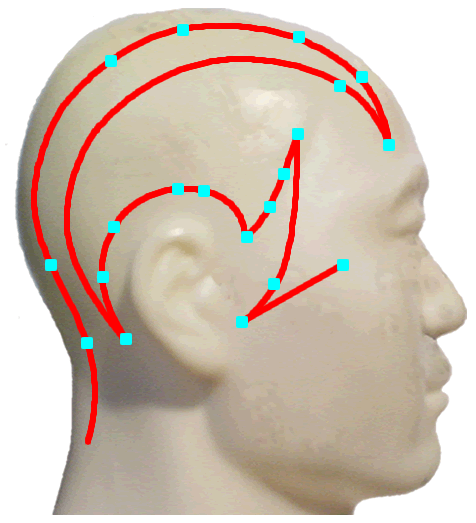
While we were looking for possible anatomical correlations for the
gallbladder meridian, the first thing we thought was that the highest
part of its pathway is very similar to a sickle (falx-falcis in
Latin), like the one that divides the right cerebral lobe from the left,
called falx
cerebri or
cerebral falx. Although this was a good finding, it was
not enough for us. After giving a valid explanation for the presence of
the strange circle in
the kidney acupuncture meridian, we expect each meridian to
have an univocal connection with the shape of the pertaining organ, or
its embryologic development. And so it is. Although in Traditional
Chinese Medicine (TCM) the brain is a curious - extraordinary
organ, it is under the control of the liver and gallbladder. Thus we
started to compare the gallbladder meridian pathway with the gallbladder
anatomy and the annexed
biliary tree within the liver. So we discovered that
the first three segments of the gallbladder meridian (GB1 to GB2, GB2 to
GB4 and GB4 to GB7) trace out the shape of the pancreatic duct and
biliary common duct with hepatic ducts in an almost realistic way. The
fourth segment (GB7 to GB12) continues to trace out the shape of the
cystic duct and gallbladder body, as well as the lateral tract of the
anterior-inferior margin of the liver's right lobe. In the picture below
we have overlapped the head-pathway of the gallbladder meridian onto
three different liver-gallbladder images for a better understanding. The
work goes on... 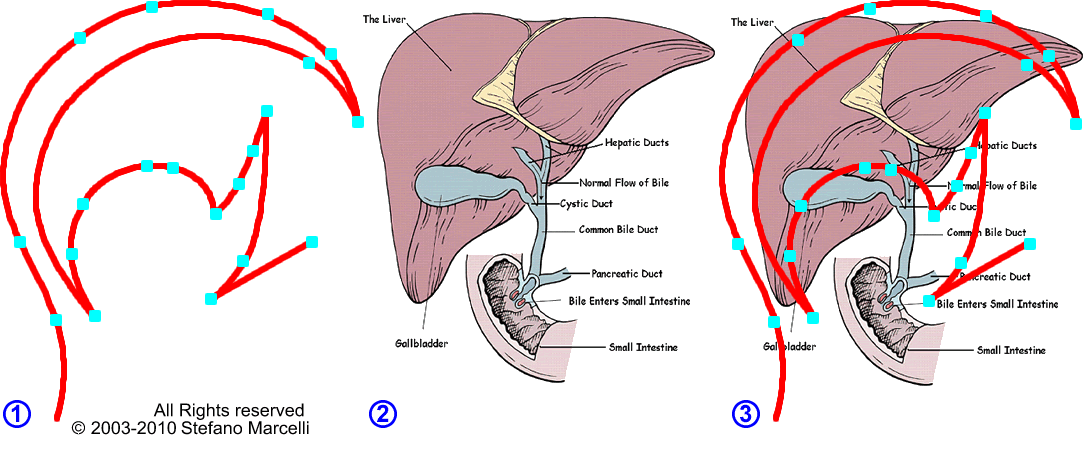
LifeART (and/or) MediClip image copyright (appropriate year) Wolters Kluwer Health, Inc.- Lippincott Williams & Wilkins. All rights reserved
|
